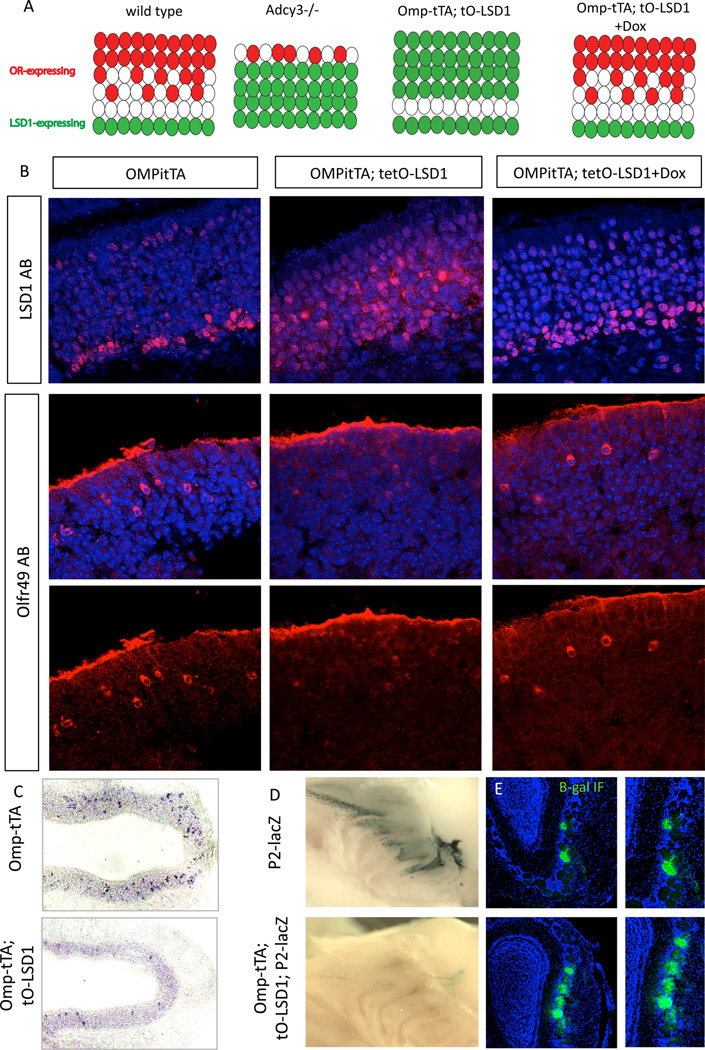Figure 5.
Ectopic expression of transgenic LSD1 in the mature neuron layer causes reversible destabilization of OR expression.
(A) Model summarizing results in adult MOE regarding the expression pattern of ORs and LSD1 under different genetic manipulations:. OR-expressing OSNs are prevalent in LSD1-negative layer regardless of genotype. Weakly OR-expressing OSNs are present in OMPitTA;tetO-LSD1 mice before dox but robust expression returns following dox and the reduction of LSD1 misexpression.
(B) Adult OMP-tTA; tetO-LSD1 mice were raised until 3 weeks and either placed on doxycycline for 3 weeks to shut off tTA activation, or maintained on dox-free food. Control littermate mice (OMPitTA only) were also placed on doxycycline for 3 weeks. 6 week old MOE were harvested and IF was performed for LSD1 (red top panel) or Olfr49 (C6) (red two bottom panels with or without DAPI). See also Figure S5.
(C) Misexpressing LSD1 in the MOE with OMPitTA reduced OR expression in the MOE. Chromogenic ISH OR pool (15 OR probes total) in OMPitTA (left) and OMPitTA; tetO-LSD1(right).
(D) P2-lacZ (top left) and P2-lacZ;OMPitTA; tetO-LSD1 (bottom left) MOE and bulb following whole mount X-gal staining in PND25 mice. Olfactory bulb sections (right) from the same genotype are shown with bet-agalactosidase IF (green). Despite the low levels of beta-gal at the cell bodies due to switching, the protein appears stable at the axons (Clowney et al, 2013), which allows the visualization of additional glomeruli.

